PERSIAN KNOWLEDGE
SATISFY YOUR THIRST FOR
DISCOVER PERSIAN CULTURE
Persian, known as "Farsi" in its native form, is one of the world’s most historically significant and poetic languages. It belongs to the Indo-Iranian branch of the Indo-European language family, setting it apart from the Semitic and Turkic languages spoken in neighboring regions.
Persian is primarily spoken in Iran, where it is the official language, but it also has speakers in Afghanistan (as Dari) and Tajikistan (as Tajik), as well as in diaspora communities worldwide. With approximately 100 million speakers, Persian is one of the most widely spoken and influential languages in the Middle East and Central Asia.
Unlike its Arabic-influenced neighbors, Persian has retained its Indo-European roots, sharing linguistic ties with languages such as Kurdish, Pashto, and even English. However, over centuries, it has absorbed thousands of loanwords from Arabic, Turkish, French, and Russian, shaping its unique vocabulary and linguistic richness.
Persian is deeply tied to the culture and history of Iran, having served as the literary and administrative language of great empires, including the Achaemenids, Sassanids, and Safavids. It is known for its rich literary tradition, with masterpieces from poets such as Rumi, Hafez, Ferdowsi, and Saadi, whose works have influenced global literature and philosophy for centuries.
5 Unique Features of the Persian Language:
Simple Grammar – Unlike many languages, Persian lacks grammatical gender and has no complex noun cases, making it structurally easier to learn compared to many other Indo-European languages.
Extensive Use of Loanwords – Persian has historically borrowed heavily from Arabic, yet adapted these words to Persian phonetics. In modern times, it has also incorporated French, Russian, and English terms, particularly in science, politics, and technology.
Verb-Ending Structure – Persian verbs follow a consistent pattern, with tense, aspect, and person indicated by suffixes, making verb conjugation relatively straightforward once mastered.
Fluid and Poetic Expression – Persian is known for its metaphorical richness and poetic flexibility, which allows for eloquent expression in everyday speech. Even common phrases often contain poetic imagery and historical references.
Unique Writing System – Persian uses a modified Arabic script, but with four additional letters (پ, چ, ژ, گ) to accommodate sounds not found in Arabic. Unlike Arabic, Persian does not use vowel markings, requiring learners to infer pronunciation from context.
NATURAL METHOD TO LEARN PERSIAN
Our language courses are based on the Natural Method, also known as the Natural Approach, developed by linguist Stephen Krashen and language educator Tracy Terrell. This approach focuses on creating an environment that mimics how individuals naturally acquire their first language, emphasizing comprehension, communication, and a stress-free learning experience.
While other language courses rely on rote memorization and drills, a heavy academic approach to grammar, repetitive exercises, expensive and time-consuming formal tutoring sessions or ineffective and shallow phone apps, we will have you gradually build your language skills like a child learning his/her mother tongue.
There are essentially 5 Core Principles in the Natural Method:
Comprehensible Input (i+1)
Learners acquire a language when they are exposed to materials slightly beyond their current level of understanding (represented as i+1). By hearing or reading content they mostly understand, learners can gradually internalize new vocabulary and grammar structures.Focus on Communication
The Natural Method prioritizes fluency and the ability to communicate over grammatical perfection. Errors are seen as a natural part of the learning process and are not heavily penalised, reducing anxiety and encouraging learners to express themselves.Emotional Element
Emotional factors like anxiety, motivation and enjoyment greatly influence language acquisition. When learners are in a relaxed state, achieved by removing the anxiety linked to the pressure to produce perfect grammar, it is easier for them to get through the initial phase which is arguably the hardest and where most give up. It is also proven to be easier for the brain to absorb and retain new information if the learner is actually interested in the language and its underlying culture, which is why he have included extensive cultural insights, historical and modern pop culture elements in our language course.Stages of Language Acquisition
Scholars have identified the following stages in the language acquisition process of young children:Pre-production: The "silent period," where learners focus on listening and understanding without speaking.
Early Production: Learners begin using simple words and phrases.
Speech Emergence: Learners can construct longer sentences and express ideas more freely.
Intermediate Fluency: Learners develop more complex language skills and can engage in meaningful conversations.
Advanced Fluency: Learners achieve near-native proficiency.
The goal of our courses is thus to mimic the natural language acquisition process without overwhelming the learner with long and tedious lessons but ensuring gradual gains so that he/she remains committed to his/her fluency goal.
Meaningful Interaction
Instead of rote memorization of single words and grammar rules over and over, the Natural Method encourages activities that involve real-world communication to help retain information. This is why we have included storytelling and role-playing scenarios that simulate everyday situations, with exercises that allow the learner to understand his/her current level and thus improve upon specific elements.


